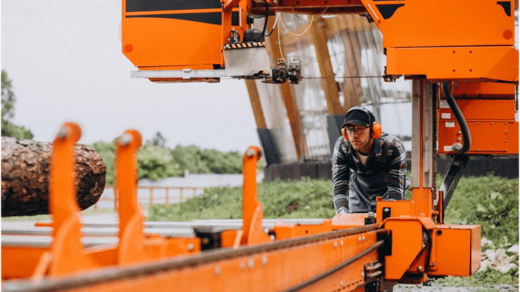Machinery rigging is an essential component of heavy lifting projects. It involves the use of specialized equipment, tools, and techniques to move large and heavy loads. This process not only ensures safety but also enhances the overall efficiency of a project. Whether in construction, manufacturing, or other industries, rigging plays a key role in optimizing operations.
The Role of Machinery Rigging in Heavy Lifting
Machinery rigging facilitates the movement of massive equipment or structures that cannot be handled manually. By employing the right rigging methods, heavy objects can be lifted, transported, and placed precisely where they are needed. This significantly reduces downtime and ensures that the project progresses without delays. Modern machinery rigging is vital for projects requiring the transportation of bulky items, like heavy machinery or steel beams.
Safety First with Rigging Equipment
One of the main reasons machinery rigging enhances efficiency is due to the safety measures it incorporates. Lifting heavy loads without the right tools or techniques can lead to accidents, equipment damage, and costly delays. Rigging ensures that these risks are minimized by using certified and well-maintained tools, such as cranes, hoists, and slings. These tools are designed to handle extreme weights, ensuring that each lift is completed without compromising safety standards.
Cost Reduction through Proper Rigging
Using proper machinery rigging techniques can save companies a significant amount of money. Efficient rigging reduces the need for additional labor and prevents accidents that could lead to costly repairs or insurance claims. By streamlining the lifting process, companies can complete projects faster and with fewer resources. This helps avoid delays and mitigates the potential for financial losses during complex projects.
The Precision of Machinery Rigging
One of the main advantages of machinery rigging is its ability to ensure the precise placement of heavy equipment or materials. With the right rigging methods, operators can lift and position items exactly where they are needed without error. This is especially important in industries like construction or shipbuilding, where exact placement can be critical. Rigging reduces the need for adjustments and rework, speeding up the overall timeline of the project.
Enhanced Project Timelines with Rigging Techniques
When heavy lifting projects are well-planned and executed with the help of machinery rigging, the entire project benefits from faster timelines. Proper rigging ensures that the equipment moves smoothly from one stage to the next, cutting down on waiting times and avoiding unnecessary delays. In high-stakes projects, where time is money, the ability to complete each stage on schedule is crucial. Machinery rigging helps achieve this, enabling projects to stay on track.
Choosing the Right Machinery Rigging Techniques
The success of a heavy lifting project often hinges on selecting the appropriate rigging technique. Not all loads are the same, and different types of machinery rigging are required for specific challenges. For example, a large industrial machine may need a different approach than a construction beam. Understanding the load, its shape, and the surrounding environment allows engineers to select the optimal rigging methods. By doing so, they ensure that the machinery and lifting processes are effective and efficient.
Conclusion
Machinery rigging is an invaluable part of heavy lifting projects. By improving safety, reducing costs, ensuring precision, and enhancing project timelines, it contributes significantly to the success of various industries. Understanding the importance of rigging in these projects can lead to better planning and execution, ultimately making the lifting process more efficient and cost-effective.

